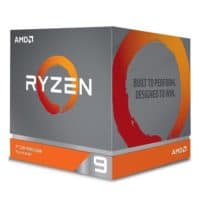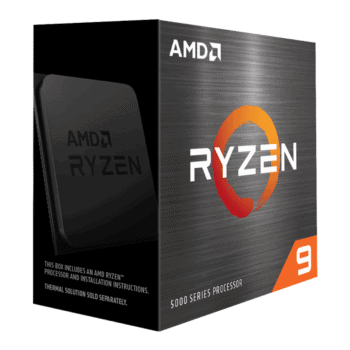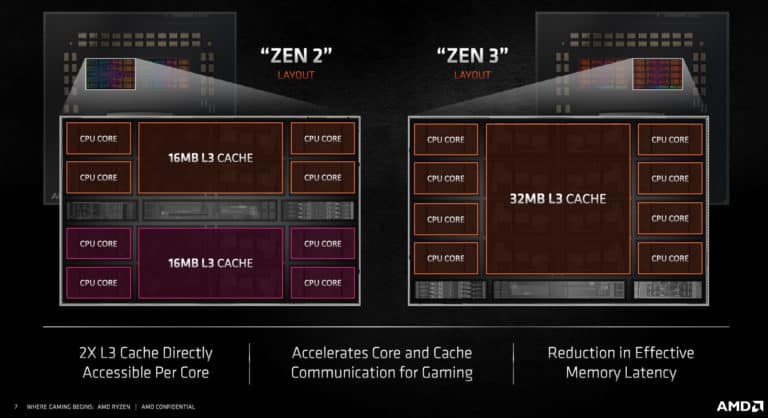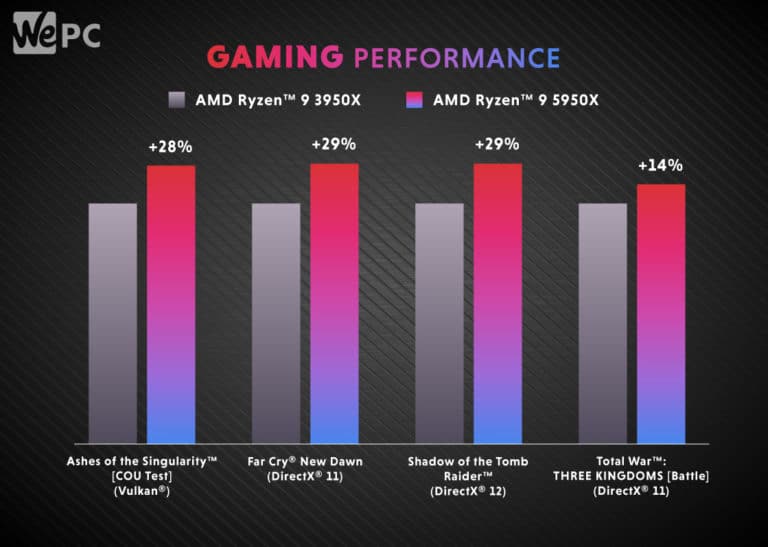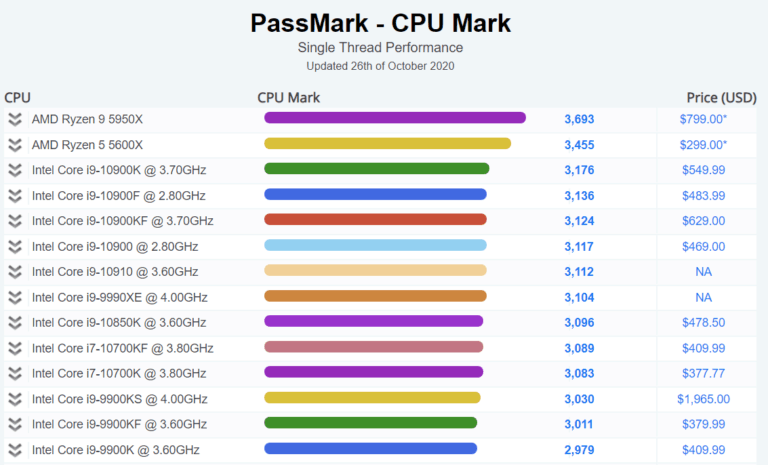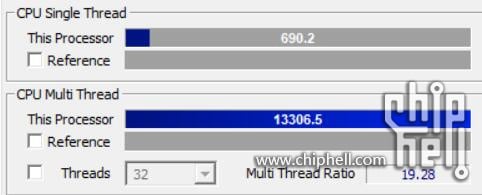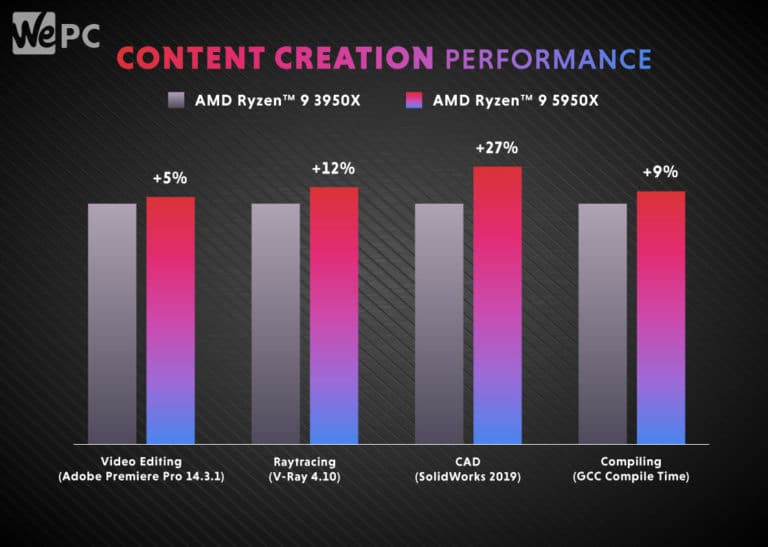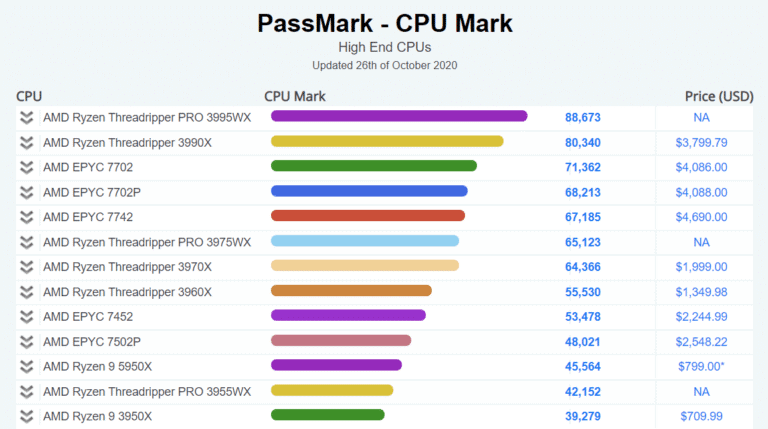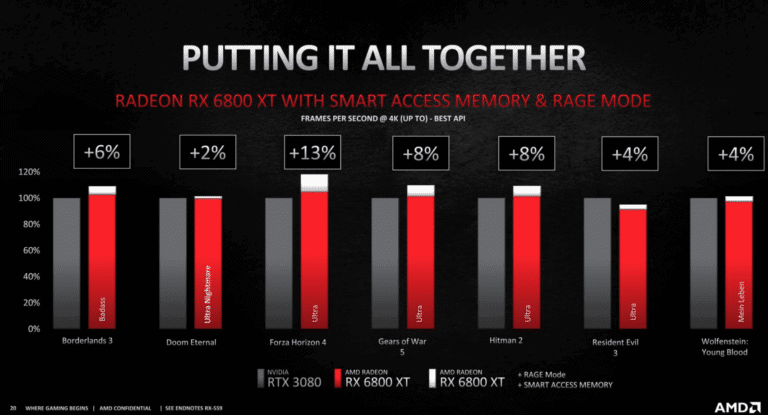AMD Ryzen 5950X vs 3950X
We compare the new Zen 3 AMD Ryzen 5950X to the AMD Ryzen 3950X Zen 2 CPU to see which is better
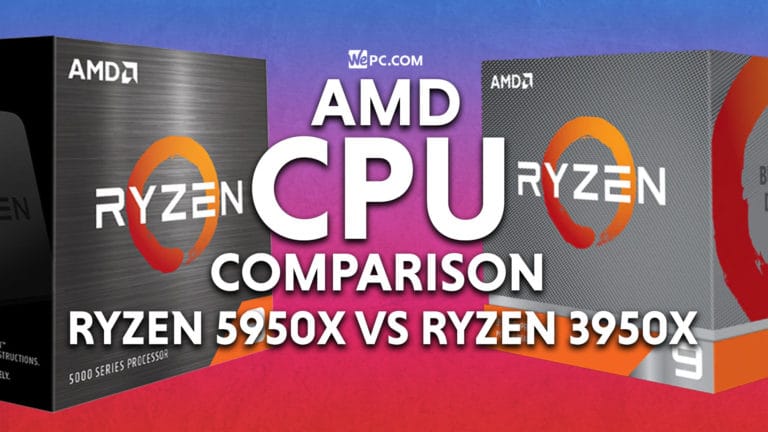
Update: Check out our Where to Buy pages to get your hands on these AMD CPUs:
Until recently, Intel was king when it came to gaming CPUs, with its more powerful single-thread performance, where AMD was dominant for workstation builds which required greater multi-core and memory cache performance. The Zen 2 3950X has been one of the crown jewels of AMD’s dominance of the workstation market, but with the Zen 3 5950X, AMD seeks to combine this workstation edge with gaming performance that can take Intel’s crown. Let’s take a closer look at the information currently available to see if they’ve been successful.
Zen 2 vs Zen 3 Architecture
“Zen” is the term used by AMD for the different generations of their CPU architecture. The 3950X is based on the Zen 2 architecture and the 5950X is on Zen 3. Despite both Zen 2 and Zen 3 being based on a 7nm process, AMD have refined the technology substantially for Zen 3, increasing the IPC (Instructions Per Clock) and power efficiency of the same process.
Much of the performance increases in the new Zen 3 are due to changes AMD has made in the cache layout. Rather than having two lots of 16MB L3 memory with four CPU cores each, AMD are now able to give eight CPU cores simultaneous access to one large 32MB L3 memory cache. With these improvements, any one of the cores can directly access any part of data stored in the single large memory pool (such as those concerning the physics of persistent objects within a game world), rather than the data having to traverse across the ‘Infinity fabric’ in between the separate cache segments and the cores having to communicate with each other to access these separate cache segments. This means a greater speed of process resulting in less latency for games. So in effect the 3950x has 4x16MB cache sections, with four cores (eight threads) each whereas the 5950x has 2x32MB cache sections, with eight cores (16 threads) each – the same amount of memory and cores overall, just more efficiently utilized.
Zen 2 vs Zen 3 Architecture
“Zen” is the term used by AMD for the different generations of their CPU architecture. The 3950X is based on the Zen 2 architecture and the 5950X is on Zen 3. Despite both Zen 2 and Zen 3 being based on a 7nm process, AMD have refined the technology substantially for Zen 3, increasing the IPC (Instructions Per Clock) and power efficiency of the same process.
Much of the performance increases in the new Zen 3 are due to changes AMD has made in the cache layout. Rather than having two lots of 16MB L3 memory with four CPU cores each, AMD are now able to give eight CPU cores simultaneous access to one large 32MB L3 memory cache. With these improvements, any one of the cores can directly access any part of data stored in the single large memory pool (such as those concerning the physics of persistent objects within a game world), rather than the data having to traverse across the ‘Infinity fabric’ in between the separate cache segments and the cores having to communicate with each other to access these separate cache segments. This means a greater speed of process resulting in less latency for games. So in effect the 3950x has 4x16MB cache sections, with four cores (eight threads) each whereas the 5950x has 2x32MB cache sections, with eight cores (16 threads) each – the same amount of memory and cores overall, just more efficiently utilized.
Gaming Performance
At first glance, you might notice that the 5950X actually has a slightly lower base clock speed than the 3950X. Although this may seem initially counterintuitive, the clock speed is only part of the story with performance, the aforementioned improvements in architecture mean the number of Instructions Per Clock (IPC) is significantly greater for the 5950X, so the overall number of instructions the CPU is capable of over any given time is higher.
Whilst newer games are beginning to utilize multi-processor power and this trend is likely to increase, the big metric when it comes to gaming is still single-core performance. Single-core (and even more so thread) performance is also the main consideration on certain applications like Adobe Photoshop. AMD’s aim with the 5950X was to create a CPU which could perform in both multi-core heavy tasks like the 3950X but also have the single-core power for gaming, in theory then the newer model should outperform the Zen 2 processor in this area by some margin.
The figures below were taken from the Rzyen 5000 reveal presentation on October 8th, 2020, and show the 5950X beating the 3950X between 14% – 29%. Whilst these are impressive figures, they only represent four tested games and, as they are from AMD themselves should be taken with a pinch of salt.
Gaming Performance
At first glance, you might notice that the 5950X actually has a slightly lower base clock speed than the 3950X. Although this may seem initially counterintuitive, the clock speed is only part of the story with performance, the aforementioned improvements in architecture mean the number of Instructions Per Clock (IPC) is significantly greater for the 5950X, so the overall number of instructions the CPU is capable of over any given time is higher.
Whilst newer games are beginning to utilize multi-processor power and this trend is likely to increase, the big metric when it comes to gaming is still single-core performance. Single-core (and even more so thread) performance is also the main consideration on certain applications like Adobe Photoshop. AMD’s aim with the 5950X was to create a CPU which could perform in both multi-core heavy tasks like the 3950X but also have the single-core power for gaming, in theory then the newer model should outperform the Zen 2 processor in this area by some margin.
The figures below were taken from the Rzyen 5000 reveal presentation on October 8th, 2020, and show the 5950X beating the 3950X between 14% – 29%. Whilst these are impressive figures, they only represent four tested games and, as they are from AMD themselves should be taken with a pinch of salt.
Gaming Performance
Independent benchmarks are of course the real test, and below is the current information we have available, though bare in mind much of it has yet to be thoroughly verified. As more testing data comes out following the release of the CPUs to the public we will update this further.
As you can see the PassMark test focusing on Single Thread performance places the new AMD Ryzen 9 5950X at the very top of the pile, giving it a score of 3,693 – trouncing Intel’s best single-core performer in the gaming category, albeit for $250 more. It should be noted that the PassMark score for the 5950X is no longer available, which may mean the CPU tested was subject to serious overclocking to achieve this score, however, it still looks promising. Either way, the 3950X, by comparison, comes in 42nd place in the list, with a score of 2,747.
As you can see the PassMark test focusing on Single Thread performance places the new AMD Ryzen 9 5950X at the very top of the pile, giving it a score of 3,693 – trouncing Intel’s best single-core performer in the gaming category, albeit for $250 more. It should be noted that the PassMark score for the 5950X is no longer available, which may mean the CPU tested was subject to serious overclocking to achieve this score, however, it still looks promising. Either way, the 3950X, by comparison, comes in 42nd place in the list, with a score of 2,747.
In terms of CPU-Z benchmarking, all we have to go on currently is the below leak. According to Videocardz the below image, taken from a Chinese forum, shows the single-core performance of the 5950x hitting a score of 690.
In terms of CPU-Z benchmarking, all we have to go on currently is the below leak. According to Videocardz the below image, taken from a Chinese forum, shows the single-core performance of the 5950x hitting a score of 690.
Workstation Performance
The AMD 3950x was until now the favorite for small to medium-sized creative businesspeople/hobbyists. For YouTubers, Twitch streamers, video editors, animators, and 3D modelers, and music producers the 3950x offered all the necessaries in a workstation focused CPU – a high core count and memory cache in particular – but at a price below that of the high-end professional processors commonly referred to as HEDT (High-End Desktop) CPUs.
The heavyweights of the HEDT space are AMD’s Threadripper series the cheapest of which is $1,350, which are aimed at high-earning creative business people who need to manage multiple streams, have high compressions and decompression workloads, and make demanding use of 3D modeling software such as Blender. AMD’s EPYC series similarly offers extreme multi-core performance for substantially higher prices, though these are geared more towards server builds and are beyond the needs and requirements of retail consumers. At around $600 less the 3950x obviously cannot match the performance of even the lowest Threadripper processor in workstation tasks, but on a price/performance basis, it wipes the floor with Intel’s closest offering and has been an industry favorite since its release.
The 5950X has the same number of cores and cache as the 3950X, so should at least perform as well as the 3950X in workstation tasks, though with the aforementioned improvements to the architecture we would expect this to increase. Below are the figures AMD supplied in their reveal presentation on October 8th. Whilst they do not show a significant margin of increase for Adobe Premiere, for CAD SolidWorks 2019 the additional 27% is quite impressive.
Workstation Performance
The AMD 3950x was until now the favorite for small to medium-sized creative businesspeople/hobbyists. For YouTubers, Twitch streamers, video editors, animators, and 3D modelers, and music producers the 3950x offered all the necessaries in a workstation focused CPU – a high core count and memory cache in particular – but at a price below that of the high-end professional processors commonly referred to as HEDT (High-End Desktop) CPUs.
The heavyweights of the HEDT space are AMD’s Threadripper series the cheapest of which is $1,350, which are aimed at high-earning creative business people who need to manage multiple streams, have high compressions and decompression workloads, and make demanding use of 3D modeling software such as Blender. AMD’s EPYC series similarly offers extreme multi-core performance for substantially higher prices, though these are geared more towards server builds and are beyond the needs and requirements of retail consumers. At around $600 less the 3950x obviously cannot match the performance of even the lowest Threadripper processor in workstation tasks, but on a price/performance basis, it wipes the floor with Intel’s closest offering and has been an industry favorite since its release.
The 5950X has the same number of cores and cache as the 3950X, so should at least perform as well as the 3950X in workstation tasks, though with the aforementioned improvements to the architecture we would expect this to increase. Below are the figures AMD supplied in their reveal presentation on October 8th. Whilst they do not show a significant margin of increase for Adobe Premiere, for CAD SolidWorks 2019 the additional 27% is quite impressive.
Workstation Performance
In the so-called “High-end CPU” charts on PassMark, where multi-threaded performance is considered instead of single-core, the 5950X again outperforms the 3950X, achieving a score of 45,564 over the 39,279 attained by the Zen 2 card, and even approaching the 48,021 achieved by the EPYC 7502P for nearly $1,750 less.
Workstation performance, touching on several different areas and often differing between software, is slightly more complex to benchmark. As more information becomes available to us from independent testers we can get a more complete picture, but currently, the 5950X appears to be smashing it out of the park in both workstation and gaming functions. Truly a master of both arenas.
In the so-called “High-end CPU” charts on PassMark, where multi-threaded performance is considered instead of single-core, the 5950X again outperforms the 3950X, achieving a score of 45,564 over the 39,279 attained by the Zen 2 card, and even approaching the 48,021 achieved by the EPYC 7502P for nearly $1,750 less.
Workstation performance, touching on several different areas and often differing between software, is slightly more complex to benchmark. As more information becomes available to us from independent testers we can get a more complete picture, but currently, the 5950X appears to be smashing it out of the park in both workstation and gaming functions. Truly a master of both arenas.
AMD Ryzen 5000 CPUs With Radeon 6000 GPUs - Smart Access Memory
The final thing to consider when comparing the 3950X and the 5950X is whether or not you are intending to buy one of the new Radeon 6000 series graphics cards from AMD. As discussed here in more detail, the Smart Access Memory feature allows 5000 series Ryzen CPUs to gain additional performance through more efficient usage of GPU memory, ranging from between 2% – 13% additional FPS performance on the games AMD showed us. This is essentially free performance and anyone thinking of buying one of the new Radeons really would be missing out if they paired this with a new 3950X – in this situation, the 5950X would be the obvious choice.
AMD Ryzen 5000 CPUs With Radeon 6000 GPUs - Smart Access Memory
The final thing to consider when comparing the 3950X and the 5950X is whether or not you are intending to buy one of the new Radeon 6000 series graphics cards from AMD. As discussed here in more detail, the Smart Access Memory feature allows 5000 series Ryzen CPUs to gain additional performance through more efficient usage of GPU memory, ranging from between 2% – 13% additional FPS performance on the games AMD showed us. This is essentially free performance and anyone thinking of buying one of the new Radeons really would be missing out if they paired this with a new 3950X – in this situation, the 5950X would be the obvious choice.
In Summary
Based on all the above, the 5950X comes ahead of the 3950X in both gaming and workstation usage. As expected the performance difference is biggest for gaming, where the single-core performance of the 5950X outperforms anything else in the market. This is before you even take into account the added benefit of Smart Access Memory if you are planning on buying one of the new Radeon 6000 series GPUs, which would make picking up a 5950X a no brainer if you don’t already own a 3950X and are deciding between the two.
In terms of workstation performance, the difference seems less pronounced between the Zen 2 and Zen 3 CPUs, but further independent benchmarking will shed further light on this. Still, for the difference of $50, there’s no reason not to buy the 5950X if you’re in the market for a new CPU and don’t own either, especially if you’re a streamer or YouTuber who plays PC games. The only caveat to this would be if 3950X prices drop significantly over the next couple of months. If history is anything to go by it’s unlikely that brand new 3950Xs will drop much, but if you don’t mind buying secondhand then you could see some bargains appear.
The key question here though is if you already own a 3950X, is the 5950X worth the upgrade? If you have spent $749 on a 3950 over the last year then, even with the significant performance increase for the 5950X, it is unlikely to be worth spending an additional $799 on a new processor, unless of course you absolutely must have the best of the best and money is no object. You could of course consider selling your 3950X, particularly if you’re looking to buy one of the new Radeon 6000 series GPUs to reduce the hit on your wallet. Alternatively, keeping your 3950X to see what next year brings from AMD, either from a new offering by the red team or reduced prices on the 5950X, could be a viable strategy.



